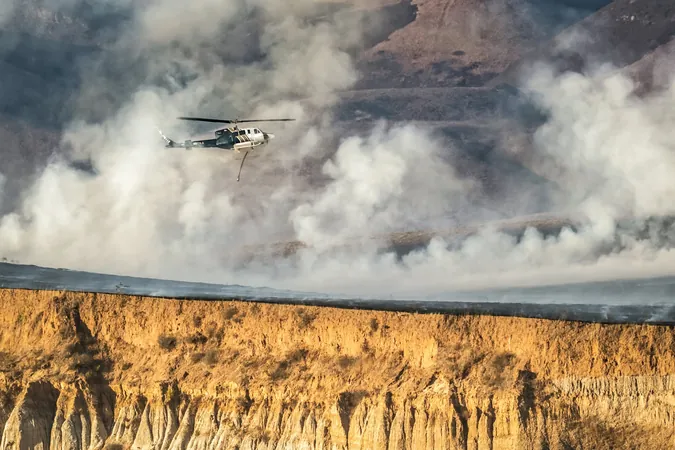
Shocking Revelations: Wildfire Suppressants Could Be Poisoning Our Waterways!
2024-10-30
Author: Wei Ling
Introduction
In the battle against raging wildfires, firefighters are increasingly relying on more than just water. Chemical and synthetic wildfire suppressants are being used extensively in fire-prone regions, but recent research raises alarming questions about their environmental impact. The latest findings, published in Environmental Science & Technology Letters, reveal that these commonly used suppressants may be introducing harmful heavy metals into our ecosystems, contributing to increased contamination following fire outbreaks.
Research Findings
Researchers led by Daniel McCurry from the University of Southern California investigated a range of wildfire suppressant products and discovered that many contained high levels of metals such as chromium, cadmium, and arsenic. "Historically, it was thought that the toxic heavy metals found in our waterways after wildfires were solely from natural sources like soil," McCurry states. "Our study suggests that fire retardants themselves might be significant contributors to these environmental releases."
Fire Suppression Products
Fire suppression products, which include fire retardants, water enhancers, and foams, are designed to douse flames and prevent flare-ups. With wildfires becoming more frequent and severe due to climate change, the volume of chemical suppressants deployed has seen a drastic increase. Both aerial and ground-based applications of these substances are now commonplace during firefighting operations.
Study Analysis
The study focused on 14 commercially available fire suppression products, analyzing them for 10 metals regulated by the U.S. Environmental Protection Agency (EPA). Shockingly, each of these products contained at least one metal exceeding the EPA's Maximum Contaminant Level for drinking water safety. Notably, several of the fire retardants tested contained a staggering eight toxic metals that far surpassed EPA regulations. In fact, one fire retardant exceeded California’s hazardous waste thresholds for three different metals!
Environmental and Health Risks
These findings signal a serious risk to our aquatic ecosystems and, potentially, to human health if these contaminants leach into drinking water sources. Given the significant quantities of fire retardants deployed across the U.S. from 2009 to 2021, researchers noted a concerning upward trend in the amount of heavy metals added to our environment, increasing the likelihood of contamination over time.
Case Study: Southern California Wildfire
For instance, in one particularly devastating wildfire in Southern California, researchers estimated that 31% of the cadmium found in a local stream could be traced back to fire retardant use. This raises critical questions about the long-term implications for our water supply and wildlife, underscoring the urgent need for further investigation into the safety and composition of these firefighting products.
Conclusion
As wildfires continue to threaten lives and property, the environmental trade-offs of using chemical suppressants must be carefully considered. Are these substances truly saving us, or are they creating a ticking time bomb of contamination? The time to act and reevaluate our firefighting strategies is now!

 Brasil (PT)
Brasil (PT)
 Canada (EN)
Canada (EN)
 Chile (ES)
Chile (ES)
 España (ES)
España (ES)
 France (FR)
France (FR)
 Hong Kong (EN)
Hong Kong (EN)
 Italia (IT)
Italia (IT)
 日本 (JA)
日本 (JA)
 Magyarország (HU)
Magyarország (HU)
 Norge (NO)
Norge (NO)
 Polska (PL)
Polska (PL)
 Schweiz (DE)
Schweiz (DE)
 Singapore (EN)
Singapore (EN)
 Sverige (SV)
Sverige (SV)
 Suomi (FI)
Suomi (FI)
 Türkiye (TR)
Türkiye (TR)